Introduction
There are many myths about the herpes virus and the kinds of diseases it causes. The fact is that there is not just one herpes virus- for now, scientists have identified more than 80 different varieties of herpes virus.
The two most common herpes viruses, and the ones that are known to basically everyone, are herpes simplex virus 1 or HSV-1 and herpes simplex virus 2 or HSV-2. These two cause the most common forms of herpes infection- oral herpes and genital herpes.

The distinction between two viruses is made more based on where they appear than on the actual type of the virus. Still, it is safe to say that HSV-1 mainly causes oral herpes, also known as herpes labialis, cold sore, or fever blister, while HSV-2 is mostly responsible for genital herpes. Both are considered to be sexually transmitted, but HSV-1 can be transmitted in different ways too, for example through kisses.
Oral Herpes
Oral herpes, also called cold sore or fever blister, commonly appears on the lips, but sometimes it can develop inside the mouth or in the nose too. Its symptoms are similar to those of genital herpes, except for the location, of course.
Before an actual sore appears, there is a slight tingling sensation at the site where the sore will appear. The sore at first takes the form of a fluid-filled blister, which eventually bursts, and a scab forms on top of it. Oral herpes heals in seven to 14 days.
The virus is usually contracted in childhood, through kissing, or, less commonly, through hand-to-mouth contact. Many times the virus is asymptomatic at first, but the outbreaks, after the initial one, tend to reoccur. It is estimated that 80 to 90 percent of adult Americans have oral herpes, in one form or another.
Oral herpes can be caused by both HSV-1 and HSV-2, but HSV-1 is responsible for more than 90 percent of cases of oral herpes. Oral herpes caused by HSV-2 has more frequent outbreaks and more severe symptoms.
Genital Herpes
In the majority of cases, genital herpes is caused by HSV-2. The virus is primarily spread through sexual contact, whether it is vaginal, anal, or oral. Genital herpes, just like oral herpes, involves blisters. However, compared to oral herpes, the number of blisters in genital herpes is much higher.
At first, the area becomes tingly, and then small red bumps appear. The bumps then turn into blisters. When the blisters burst, a scab forms. After the scabs fall off, herpes can be considered healed.
An outbreak of genital herpes can involve flu-like symptoms, such as fever, fatigue, muscle ache, and headache. This sometimes happens with oral herpes too, but much less frequently.
- This study addresses the changing distribution of herpes simplex virus type 1 (HSV-1) and HSV-2 in patients presenting for evaluation of herpetic infections. Viral culture results from the University of Kentucky Clinical Microbiology Laboratory were reviewed for a 6-year period (1994 through 1999). Data were collected on patient sex, site of culture, and culture result. These data were analyzed statistically to identify yearly trends. Of the 4,498 cultures analyzed, nearly equal proportions of HSV-1 (13.3%) and HSV-2 (12.0%) were detected for an overall culture positivity rate of 25.3%.
- Approximately two-thirds of all positive cultures were from women. Although HSV-2 remained the predominant type of genital herpes, over the 6-year span of this study, there was a trend toward increasing proportions of HSV-1 genitalis, with 31.8% of male patients and 44.8% of female patients demonstrating HSV-1 genitalis by 1999.
- The majority of patients with HSV in nongenital sites grew HSV-1. Although there was significant yearly variation, HSV-2 was isolated from only 9.4% of patients with nongenital HSV for the entire 6-year period.
- Using HSV-2 seroprevalence alone as an indicator of sexually transmitted genital herpes infection significantly underestimates the true occurrence of genital herpes, however, since HSV-1 also may produce genital infections. It is estimated that approximately 10 to 15% of all cases of primary genital HSV are caused by HSV-1, with increased proportions of HSV-1 being described focally in the United States, the United Kingdom, and Japan.
- Demographic analysis of individuals with primary genital HSV-1 has indicated that 50 to 100% of these patients had experienced oral-genital contact within weeks of their outbreak. These studies suggest that the practice of oral-genital sex is ubiquitous among those individuals acquiring herpes genitalis. A survey of sexual practices administered to individuals presenting to a Denver clinic for HIV testing likewise indicated that oral sex was quite commonly practiced in this patient population, with 88.7% acknowledging having had oral sex as a risk factor for acquiring an STD.


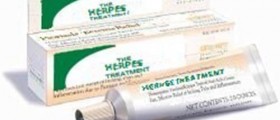

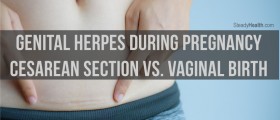

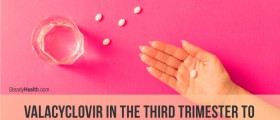
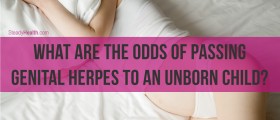

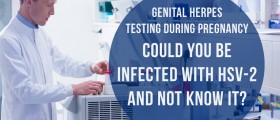
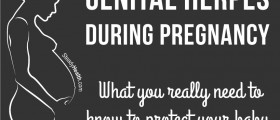




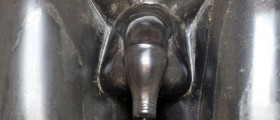

Your thoughts on this
Loading...